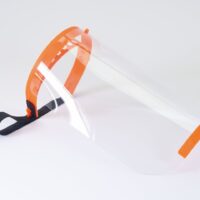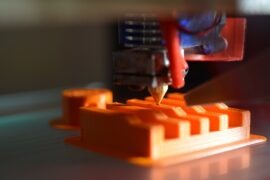We’re enchanted with the idea of working from home. We imagine ease, flexibility, and access to a completely stocked pantry, fewer meetings, higher efficiency, and more getting things done. While we’re at the office, the idea seems simple. Then we get home, happy to leave work behind. And then a virus spreads around the world, society as we know it is upended, the world is nearly shut down, and we have no choice but to work from home. Suddenly, we’re left with the stark realization that we may not be prepared for that and exploring ways to make that possible.
Out of a number of people I’ve talked with, some companies have had to scramble, scheduling split office hours and shifts to reduce the number of staff on-site or simply sending everyone home. Others who are prepared to work remotely are facing problems with software, licensing, narrow bandwidth over wonky VPNs and even narrower patience with the whole ordeal. The situation that has pushed us here isn’t ideal but the outcome may be the kick we need to get more flexible options in place. It’s really an opportunity. An opportunity to find what works better. An opportunity to go through a process that will impact how we work, and where we’re able to work, forever.
The Future of Work
In an article published recently titled The Future of Work is Now, Onshape brought a heap of insight to an interesting shift in work conditions. Many (85% world-wide) already have a desire for a more flexible workspace. And the majority (62%) of countries surveyed already have flexible workspace policies. They provide some context on what it takes to make that happen and how Onshape fits the needs. It’s sure to spark some ideas.
Then you look at where we are right now. We’re in a spot where we or the companies we work for have been forced to be more flexible. In an instant manufacturing, supply chain, and retail have come to a standstill trying to adapt to conditions that are changing every day. So how do you adapt successfully? Maybe even permanently? How do you get to that spot where you can identify what’s needed and share the benefits of having more flexible work conditions?
Track the Pain Points. Identify Solutions.
If you’ve had a wrench thrown in your work routine or found yourself suddenly required to work from home, you’ve had to adapt quickly. It’s going to be easier for some than others. But you can take advantage of the situation, treat it as an opportunity, and map out solutions to issues as they come up. We’re used to post-project retrospectives – what went well, what could be improved. Don’t wait until after the opportunity has passed. Nail it down in real-time.
Grab a notepad or open a doc. Keep track of the pain points. What’s hindering me? Why can’t we progress faster? And keep track of them along the way. But it doesn’t stop with listing out the problems. Identify the solutions. What would solve my issue? What would help us complete this task?
A successful business is able to adapt, shift quickly, and keep projects rolling along. Those types of companies don’t dwell on the problems; they focus on what is going to provide the most flexibility. They invest in solutions to keep their employees moving forward.
I think you’ll find the aspects that provide the most flexibility quickly boils down to a few key issues. In product dev teams I’ve worked with, they are always access, communication, and dependability. This goes for the people and the tools. And when you think about how this applies to engineering and design, Onshape shows where their platform shines. Where exactly are they delivering more flexibility in product development? Let’s look at those three areas and see how their approach to a solution is affecting product development.
1. Access
Problem: When you’re in the office, you have everything at your fingertips. But when you’re outside the office, in a design review, at a manufacturer, or at your home, how do you access 3D CAD data, drawings, change requests, or the latest revision? And then how do you access the people responsible for making updates or design decisions? There are so many problems here with how we’ve done this in the past, from file sharing to VPN access. We’ve taken what hardly works for one person, applied it to a team, and assumed it will work to manage a product lifecycle.
Solution: Onshape, on the other hand, centralizes your workforce and your project, bringing access to every aspect of the project to everyone involved. It makes simultaneous collaboration on the same design possible. The status is always visible, you can see changes in real-time and can be notified for when those changes are made. You can set roles and security levels and add or remove people or vendors at any time. It automates and eliminates so many of the manual processes that we’ve tried to force-fit into a system that requires accessibility to the data and people.
2. Communication
Problem: When we’re in the office and everyone’s there, communication is easy. We can have design reviews, co-workers commenting on how to do something over your shoulder, and too many meetings. Outside the office, we’re disconnected, which can be nice and help us be more efficient. But we’re also outside of our project. We’re outside the discussions and changes. Outside where we need to be involved. We’ve tried to solve this with email, phone, Skype, or Slack, sacrificing context to feel like a productive communicator. It’s worked, but it could be better.
Solution: Onshape gives the communication context. It puts real-time comments in the project or model where the discussions need to happen. It consolidates the data with the communication and focuses the conversation where it’s relevant. And, even though you or the team may be in separate locations, it includes those involved in making the decisions and moving forward.
3. Dependability
Problem: In the office, we can depend on having access to data and people, we have a computer and a software license when we need it, and all the files and binders of current and previous projects. Outside the office, that changes. Our productivity is dependent on our (or someone else’s) preparation. The instant data is not accessible, progress is not made. We lose all dependability on a system that was likely designed to limit accessibility, which then makes us dependable on people we’ve relegated to dependence on a system that is not dependable.
Solution: Onshape has implemented the capabilities to prepare companies for when dependability matters. It may be as innocuous as finding a drawing or as important as not losing a day’s worth of design work. With the latter, it helps us not worry about losing data but also helps us not worry about others losing data. Though dependability resides so much within each one of us, Onshape brings in features that help us be more reliable team members, from task and release approvals to interactive reporting and analytics. We don’t think about dependability as something built into a system, but Onshape reveals an attention to this that increases flexibility across the entire organization that uses it.
We talk a lot about a more mobile, more flexible work environment as the future, complete with software that’s accessible, data that is current, and co-workers and vendors who are involved with every aspect. That’s where we should be. But it’s also where we are. We’re always going to have legacy data and processes.
So, what are you doing to make your company more flexible and able to adapt? Are you prepared? Were you prepared? Treat these uncertain times that have forced you to adapt as an opportunity to find what works better; An opportunity to go through a process that will impact how you work, and where you’re able to work, forever.
In the meantime, check out Onshape. They have a live webinar Wednesday, April 1st about How Engineering Teams can Adapt to Changing Work Environments. I think we’re already having to adapt, but put it on your calendar and register here to watch it.





![6 Types of Civil Engineering Drawings [Detailed Guide]](https://www.solidsmack.com/wp-content/uploads/2023/12/Civil-Engineering-Drawings-270x180.jpeg)

